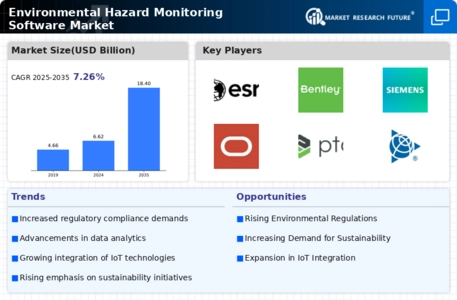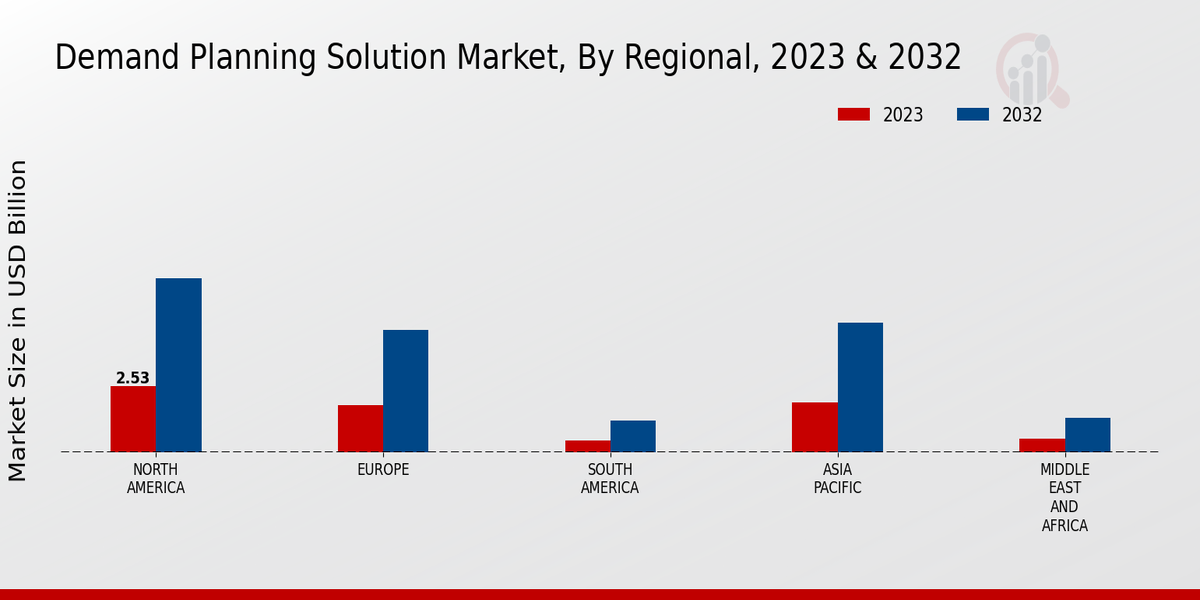Market Growth Projections
The Global Environmental Hazard Monitoring Software Market Industry is poised for substantial growth, with projections indicating a market size of 6.62 USD Billion in 2024 and an anticipated increase to 18.4 USD Billion by 2035. This growth trajectory is supported by a compound annual growth rate (CAGR) of 9.74% from 2025 to 2035. Such figures illustrate the increasing recognition of the importance of environmental hazard monitoring in various sectors, as organizations seek to mitigate risks and enhance compliance with evolving regulations.
Technological Advancements
Technological innovations are propelling the Global Environmental Hazard Monitoring Software Market Industry forward. The integration of artificial intelligence, machine learning, and big data analytics into monitoring solutions enhances their effectiveness and efficiency. These technologies enable real-time data analysis and predictive modeling, allowing organizations to proactively manage environmental risks. As industries adopt these advanced tools, the demand for sophisticated monitoring software is likely to increase. This trend suggests a robust growth trajectory, with a projected CAGR of 9.74% from 2025 to 2035, highlighting the importance of technology in environmental hazard management.
Rising Environmental Awareness
Growing public awareness regarding environmental issues is a significant driver for the Global Environmental Hazard Monitoring Software Market Industry. As communities become more informed about the impacts of pollution and hazardous waste, there is an increasing demand for transparency and accountability from corporations. This societal shift encourages businesses to invest in monitoring software to track their environmental footprint and improve sustainability practices. Consequently, the market is expected to grow substantially, with projections indicating a rise to 18.4 USD Billion by 2035, as organizations strive to align with consumer expectations and regulatory demands.
Demand for Sustainable Practices
The push for sustainability across various sectors is significantly impacting the Global Environmental Hazard Monitoring Software Market Industry. Companies are recognizing the importance of adopting sustainable practices to enhance their corporate social responsibility profiles and meet stakeholder expectations. This shift is driving the demand for monitoring software that can track environmental impacts and ensure compliance with sustainability standards. As organizations prioritize sustainability, the market is poised for growth, with projections suggesting a rise to 6.62 USD Billion in 2024, reflecting the increasing integration of environmental considerations into business strategies.
Increasing Regulatory Compliance
The Global Environmental Hazard Monitoring Software Market Industry is experiencing growth driven by stringent regulatory compliance requirements. Governments worldwide are implementing more rigorous environmental regulations to mitigate risks associated with hazardous materials. For instance, the European Union's REACH regulation mandates that companies must monitor and report the use of hazardous substances. This regulatory landscape compels organizations to adopt advanced monitoring software to ensure compliance, thereby enhancing the demand for such solutions. As a result, the market is projected to reach 6.62 USD Billion in 2024, reflecting the critical role of software in meeting compliance standards.
Global Climate Change Initiatives
The urgency of addressing climate change is a pivotal factor influencing the Global Environmental Hazard Monitoring Software Market Industry. Governments and international organizations are launching initiatives aimed at reducing greenhouse gas emissions and promoting sustainable practices. These initiatives often require comprehensive monitoring of environmental hazards to assess progress and compliance. As a result, organizations are increasingly adopting monitoring software to align with climate goals and regulatory frameworks. This trend is expected to contribute to the market's growth, with estimates indicating a potential market size of 18.4 USD Billion by 2035, underscoring the software's role in climate action.
























Leave a Comment